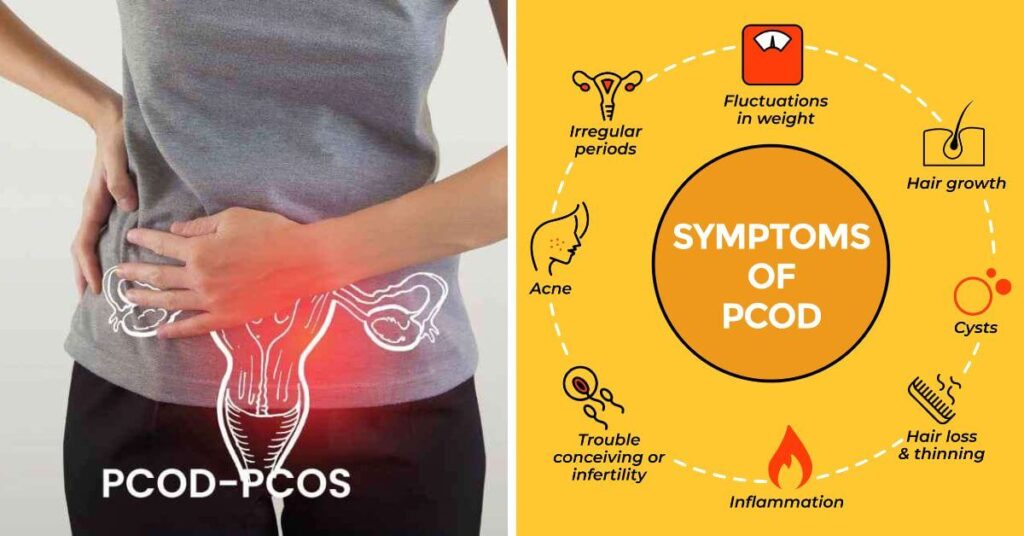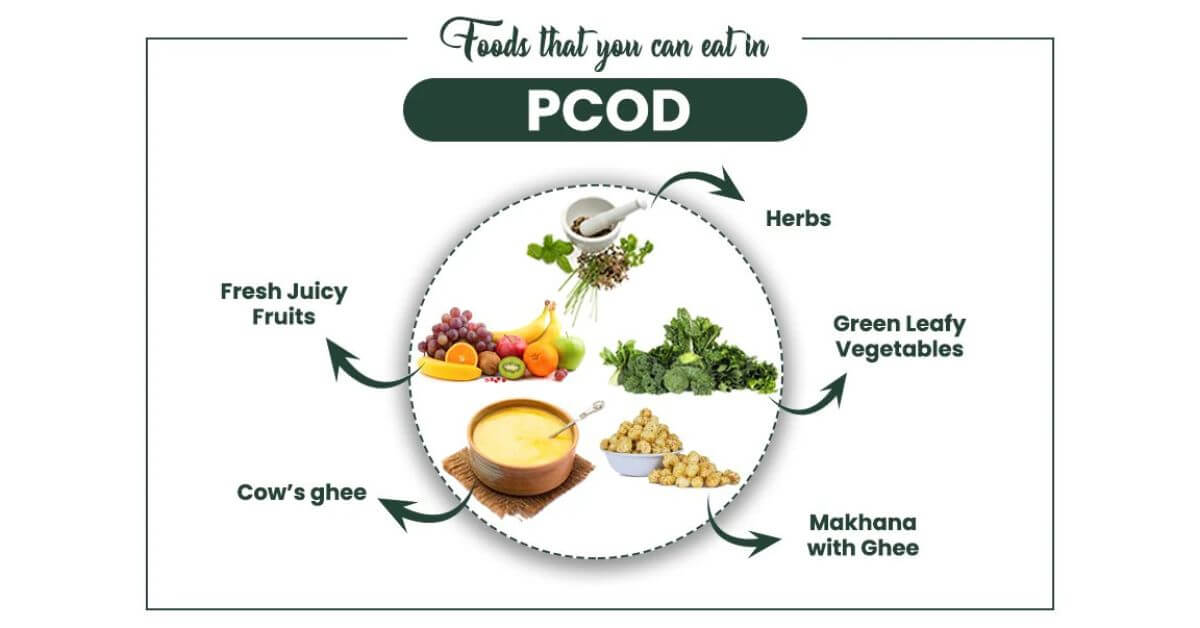Kick off with an energetic welcome. Address the rising prevalence of PCOD and how a tailored food chart can transform symptoms. Emphasize authority, research-backed info, and the goal: sustainable hormonal balance.
Understanding PCOD & Nutrition
Polycystic Ovarian Disease, commonly known as PCOD, isn’t just about irregular periods or unwanted facial hair. It’s a complex hormonal disorder that impacts millions of women, often silently disrupting fertility, metabolism, and emotional well-being. But here’s the good news: what you eat can make a powerful difference.
When we talk about PCOD, we’re looking at more than just cysts on ovaries. This condition usually involves a hormonal imbalancecprimarily excess androgens (male hormones like testosterone), insulin resistance, and chronic low-grade inflammation. These are the root biological disturbances that contribute to weight gain, acne, hair loss, mood swings, and missed periods.
That’s where a well-structured PCOD food chart comes into play.
Why Food Choices Matter with PCOD
You’ve probably heard the saying, “Let food be thy medicine.” When it comes to PCOD, this couldn’t be more accurate. Nutrition directly affects how your body processes insulin, how your ovaries function, and how balanced your hormones stay throughout the month.
Here’s what’s happening under the surface:
- Insulin resistance makes your body less responsive to insulin, causing your pancreas to produce more. This excess insulin can trigger your ovaries to release more androgens (like testosterone), which worsens PCOD symptoms.
- High insulin and androgen levels promote fat storage, especially around the abdomen. This creates a vicious cycle, making PCOD even harder to manage.
- Inflammatory foods, like processed sugars and saturated fats, fan the flames literally. Chronic inflammation can suppress ovulation and lead to even more hormonal chaos.
That’s why creating a PCOD diet plan that’s rich in whole, nutrient-dense foods is crucial for healing.
The Science Behind a PCOD Food Chart
The right PCOD food chart doesn’t just reduce your weight it works at a deeper cellular level to reprogram your metabolism, balance your hormones, and reduce inflammation.
Let’s break this down:
| Core Issue in PCOD | How Diet Helps |
|---|---|
| Insulin Resistance | Low-GI carbs, lean proteins, fiber help stabilize blood sugar |
| High Androgen Levels | Anti-inflammatory foods + spearmint, flaxseeds help lower testosterone |
| Chronic Inflammation | Omega-3s, turmeric, green veggies reduce oxidative stress |
| Irregular Ovulation | Balanced meals support hormonal rhythm |
It’s not about starving or cutting out all carbs. It’s about choosing the right carbs, pairing them wisely with protein and healthy fats, and avoiding the foods that spike your insulin or worsen inflammation.
The Real Role of Nutrition in PCOD
Nutrition becomes your first line of defense. Here’s how a PCOD-friendly diet works biologically:
- ✅ Lowers fasting insulin levels
- ✅ Reduces free testosterone in the bloodstream
- ✅ Promotes healthy ovulation
- ✅ Decreases the likelihood of weight gain
- ✅ Improves skin and hair health
- ✅ Regulates mood and energy levels
When you fuel your body with the right foods, your hormones respond in kind. It’s like giving your endocrine system a tune-up.
Core Components of a PCOD Food Chart
Creating the right PCOD food chart isn’t just about choosing random healthy foods. It’s about being strategic selecting ingredients that support hormone health, manage insulin levels, and reduce inflammation. Each food group plays a specific biological role, and together they form a balanced plate that works with your body, not against it.
Let’s break it down into essential categories you need to focus on:
1. Low-Glycemic Index (GI) Carbohydrates
Not all carbs are created equal. High-GI carbs like white rice, white bread, and sugary cereals cause your blood sugar to spike and crash bad news if you have PCOD. That’s because these spikes worsen insulin resistance, a hallmark of the condition.
Instead, choose low-GI, high-fiber carbs that release glucose slowly, giving your body a chance to use it efficiently without causing hormonal chaos.
What to include:
- Quinoa
- Brown rice
- Oats
- Barley
- Sweet potatoes
- Whole wheat or multigrain roti
- Lentils, chickpeas, kidney beans
- Millets (like foxtail, bajra, and ragi)
Biological Benefit: These carbs help lower insulin levels, which in turn helps reduce androgen production. That means fewer acne breakouts, more regular periods, and better weight control.
2. Lean and Plant-Based Proteins
Protein is your metabolism’s best friend. It helps stabilize blood sugar, supports muscle growth, and increases satiety so you don’t experience frequent cravings.
Women with PCOD often lack satiety hormones like leptin, and protein can help rebalance that.
What to include:
- Egg whites
- Paneer (low-fat)
- Greek yogurt
- Tofu
- Tempeh
- Skinless chicken
- Fish (salmon, sardines, mackerel)
- Moong dal, sprouts, beans
Biological Benefit: Protein supports muscle mass, which improves insulin sensitivity. It also indirectly improves ovulation by lowering excess insulin and cortisol (the stress hormone).
3. Healthy Fats
Don’t fear fat. The right kinds of fat are crucial for hormone synthesis, brain function, and reducing inflammation all essential for PCOD management.
Avoid trans fats and deep-fried foods, but embrace omega-3s and monounsaturated fats.
What to include:
- Avocados
- Nuts (almonds, walnuts, cashews)
- Seeds (flaxseeds, chia, sunflower, pumpkin)
- Olive oil
- Coconut oil (in moderation)
- Fatty fish like salmon or tuna
- Ghee (in small amounts)
Biological Benefit: These fats help balance estrogen and progesterone, ease PMS symptoms, and reduce chronic inflammation that contributes to irregular periods and bloating.
4. Anti-Inflammatory Fruits and Vegetables
Antioxidants are your body’s natural defense against inflammation, which is often elevated in PCOD. Fruits and vegetables also offer vitamins and minerals that are essential for reproductive and metabolic health.
What to include:
- Berries (blueberries, strawberries, blackberries)
- Leafy greens (spinach, kale, methi, moringa)
- Broccoli, cauliflower, Brussels sprouts
- Tomatoes, bell peppers
- Carrots, cucumbers, beets
- Amla (Indian gooseberry), oranges, apples
Biological Benefit: These foods detoxify the liver, support estrogen metabolism, and reduce oxidative stress, which is often linked with infertility in PCOD.
5. Herbs and Spices That Heal
Your kitchen isn’t just a place to cook it’s a natural pharmacy. Many common herbs and spices have been proven to regulate hormones, improve insulin resistance, and even restore ovulation.
What to include:
- Turmeric – A powerful anti-inflammatory
- Cinnamon – Helps control blood sugar
- Fenugreek seeds (methi) – Supports insulin sensitivity
- Ginger – Aids digestion and balances hormones
- Tulsi (Holy Basil) – Reduces cortisol
- Spearmint tea – Scientifically shown to lower testosterone
Biological Benefit: These ingredients regulate endocrine function, reduce stress-induced hormonal fluctuations, and boost fertility outcomes naturally.
6. Hydration & Detoxifying Fluids
Women with PCOD often experience water retention, bloating, and fatigue. Staying well-hydrated helps flush out excess hormones and toxins, supporting kidney and liver function.
What to include:
- Plain water (2–3 liters daily)
- Coconut water
- Cucumber-mint infused water
- Herbal teas (green tea, spearmint, chamomile)
- Jeera or fennel seed water
Biological Benefit: Hydration boosts metabolism, reduces bloating, and supports thyroid function, which is often sluggish in PCOD cases.
7. Micronutrient Support: Vitamins & Minerals
Many women with PCOD are deficient in critical vitamins and minerals like Vitamin D, B12, Magnesium, Zinc, and Chromium, all of which are essential for metabolic and reproductive health.
What to include:
- Fortified cereals
- Dairy alternatives (almond or soy milk)
- Whole eggs (with yolk in moderation)
- Pumpkin seeds (for zinc)
- Dark chocolate (70%+ cocoa, in small amounts)
- Bananas (for B6 and magnesium)
Biological Benefit: These nutrients regulate ovulation, improve mood stability, and enhance insulin activity, promoting a healthier hormonal balance.

Foods to Avoid in PCOD
If you’ve ever wondered “Why do I feel worse after eating certain things even when I’m eating less?” you’re not alone. For women with PCOD, the wrong foods don’t just cause weight gain they disrupt hormone balance, raise insulin levels, and worsen symptoms like acne, fatigue, and irregular periods.
That’s why your pcod food chart shouldn’t just include the right foods it also needs to eliminate or limit the wrong ones. Here’s what to avoid and, more importantly, why.
1. Refined Carbohydrates
Refined carbs break down quickly into sugar, causing blood glucose to rise rapidly. This spike triggers excess insulin production a major red flag for women with PCOD.
Avoid:
- White bread
- Maida (refined flour)
- Bakery items (pastries, biscuits)
- Sugary breakfast cereals
- White rice (frequently)
Why It Matters: High insulin levels stimulate the ovaries to produce more androgens (male hormones like testosterone), worsening symptoms like facial hair, acne, and missed ovulation.
🧠 Tip: Replace these with whole grains like millet, oats, or brown rice to support blood sugar control and insulin sensitivity.
2. Added Sugars & Sweetened Beverages
Sugar isn’t just hiding in desserts it’s often in your “healthy” smoothies, packaged fruit juices, sauces, and even bread.
Avoid:
- Soft drinks (cola, energy drinks)
- Store-bought fruit juices
- Sweetened yogurts
- Artificial syrups and spreads (like chocolate or caramel syrup)
- Hidden sugars in sauces and ketchups
Why It Matters: Excess sugar contributes to insulin resistance, worsens inflammation, and leads to weight gain three things that accelerate PCOD complications like infertility and depression.
🧠 Tip: Use natural sweeteners like stevia, jaggery (sparingly), or rely on whole fruits to satisfy sweet cravings.
3. Saturated and Trans Fats
Fat is essential but not all fats are created equal. Saturated fats and trans fats increase cholesterol, promote inflammation, and worsen hormonal imbalance.
Avoid:
- Deep-fried foods (pakoras, fries, nuggets)
- Fast food (burgers, pizzas)
- Processed meats (sausages, bacon)
- Margarine or hydrogenated oils
- Ready-to-eat meals and packaged snacks
Why It Matters: These fats not only increase the risk of heart disease (which is already higher in PCOD), but also disrupt the balance between estrogen and progesterone, aggravating irregular cycles and painful periods.
🧠 Tip: Cook with cold-pressed oils like olive, sesame, or coconut in moderation.
4. Excess Dairy (for Some)
This one’s controversial. While not all dairy is harmful, some women with PCOD are sensitive to milk-based products due to their influence on insulin-like growth factor-1 (IGF-1) a hormone that can increase androgen production.
Avoid or limit:
- Full-fat milk
- Cheese
- Flavored yogurts
- Milk-based desserts
- Milkshakes, ice creams
Why It Matters: In sensitive individuals, dairy can lead to hormonal acne, increased ovarian cysts, and digestive issues like bloating.
🧠 Tip: If you notice breakouts or irregular cycles after dairy, consider switching to plant-based milk (almond, soy, oat).
5. Caffeine Overload
A cup of coffee here and there is fine. But too much caffeine can trigger a spike in cortisol (the stress hormone) which can interfere with ovulation and increase insulin resistance.
Avoid:
- Excess coffee (more than 2 cups/day)
- Energy drinks
- Strong teas (especially black tea)
- Pre-workout supplements loaded with stimulants
Why It Matters: High cortisol levels disrupt the HPO axis (hypothalamic-pituitary-ovarian axis), which regulates your menstrual cycle. This means too much caffeine = hormonal confusion.
🧠 Tip: Try green tea or herbal infusions like spearmint or cinnamon tea, both of which support PCOD management.
6. Processed and Packaged Foods
Convenient? Yes. PCOD-friendly? Absolutely not.
Avoid:
- Instant noodles
- Flavored chips and namkeen
- Packaged cookies and cakes
- Frozen ready meals
- Artificially flavored snacks
Why It Matters: These products are often loaded with preservatives, artificial sugars, and sodium, which increase bloating, water retention, and inflammation common PCOD triggers.
🧠 Tip: Focus on whole, minimally processed foods. If it has a long shelf life and a long ingredient list you can’t pronounce skip it.
Sample PCOD Food Chart (7-Day Meal Plan)
When you’re dealing with PCOD, knowing what to eat is only half the battle. The real challenge? Creating a consistent eating routine that supports hormonal balance, weight management, and energy levels without feeling overwhelming.
This 7-day PCOD food chart is designed to make your life easier. It’s built around whole, nutrient-rich foods that work with your biology to reduce insulin resistance, lower inflammation, and regulate your menstrual cycle.
Whether you’re trying to conceive, lose weight, or simply manage symptoms naturally, this plan gives you a daily structure to follow while still being flexible enough to suit your lifestyle.
Daily Structure at a Glance
Each day is divided into:
- Early Morning (on waking)
- Breakfast
- Mid-Morning Snack
- Lunch
- Evening Snack
- Dinner
- Bedtime Drink (optional)
Let’s walk through this 7-day PCOD meal chart, backed by science and designed to support hormone health.
📅 Day 1 – Kickstart with Fiber & Protein
Early Morning: Warm lemon water + 5 soaked almonds
Breakfast: Vegetable oats with flaxseeds + 1 boiled egg
Mid-Morning Snack: Amla juice or 1 orange
Lunch: 2 millet rotis + moong dal + sautéed spinach + cucumber salad
Evening Snack: Green tea + a handful of roasted chickpeas
Dinner: Grilled tofu + sautéed mixed vegetables + quinoa
Bedtime: Turmeric milk (use almond milk for dairy-free)
🧠 Why this works: Rich in fiber and protein, helps improve satiety and keeps insulin levels stable throughout the day.
📅 Day 2 – Anti-Inflammatory & Low GI
Early Morning: Methi seed water
Breakfast: Besan chilla with mint chutney + papaya slices
Mid-Morning Snack: 1 pear or handful of walnuts
Lunch: Brown rice + rajma (red kidney beans) + beetroot salad
Evening Snack: Spearmint tea + flaxseed crackers
Dinner: Steamed fish or grilled paneer + broccoli stir fry
Bedtime: Chamomile tea (calms cortisol)
🧠 Why this works: Spearmint and flax help reduce testosterone; legumes support stable glucose.
📅 Day 3 – Hormone & Gut Friendly
Early Morning: Jeera (cumin) water
Breakfast: Ragi porridge + 1 boiled egg
Mid-Morning Snack: 1 banana + 1 tsp chia seeds
Lunch: 2 whole wheat rotis + lauki (bottle gourd) curry + curd (if tolerated)
Evening Snack: Coconut water + roasted fox nuts (makhana)
Dinner: Lentil soup + mixed salad with avocado
Bedtime: Warm water with fennel seeds
🧠 Why this works: Cumin and fennel support digestion, Ragi provides calcium, and lentils are rich in plant protein.
📅 Day 4 – Balanced & Detoxifying
Early Morning: Warm water with apple cider vinegar (1 tsp)
Breakfast: Vegetable upma + green chutney
Mid-Morning Snack: Apple slices with nut butter
Lunch: Quinoa pulao with vegetables + moong dal soup
Evening Snack: Tulsi tea + sunflower seeds
Dinner: Stir-fried tofu + bok choy + brown rice
Bedtime: Golden milk (turmeric + almond milk)
🧠 Why this works: Combines fiber-rich carbs with plant protein and anti-inflammatory herbs.
📅 Day 5 – Omega-3 & Iron Boost
Early Morning: Soaked chia seeds in warm water
Breakfast: Multigrain toast + mashed avocado + poached egg
Mid-Morning Snack: Pomegranate
Lunch: Bajra roti + methi (fenugreek) sabzi + sprouted salad
Evening Snack: Herbal tea + handful of almonds
Dinner: Grilled salmon or paneer + sautéed kale
Bedtime: A pinch of cinnamon in warm water
🧠 Why this works: Omega-3 from fish or flaxseed supports hormone health and brain function.
📅 Day 6 – Vegetarian Power Plate
Early Morning: Ginger-tulsi water
Breakfast: Moong dal cheela + tomato chutney
Mid-Morning Snack: 1 kiwi or guava
Lunch: Millet khichdi + beetroot raita + green beans
Evening Snack: Lemon water + pumpkin seeds
Dinner: Chickpea salad with olive oil and herbs
Bedtime: Green tea with cinnamon
🧠 Why this works: Millets regulate glucose; chickpeas are rich in zinc and fiber.
📅 Day 7 – Sunday Clean Eating Reset
Early Morning: Triphala water
Breakfast: Smoothie with spinach, chia, banana, almond milk
Mid-Morning Snack: Orange or handful of pistachios
Lunch: Oats and vegetable porridge + side of palak (spinach) curry
Evening Snack: Hibiscus tea + apple slices
Dinner: Tofu tikka + stir-fried zucchini and carrots
Bedtime: Cumin + fennel seed water
🧠 Why this works: Light, nutrient-rich meals that help reset digestion and liver detoxification.

How a Food Chart Helps You Biologically
Many women struggling with PCOD wonder why symptoms persist despite medications or exercise. The truth is, if your food isn’t aligned with your hormones, your body won’t respond well. That’s where a well-structured pcod food chart becomes a powerful tool it’s not just about managing weight, it’s about working with your body’s biology at the deepest level.
Let’s explore how the right food choices influence your internal systems:
1. Improves Insulin Sensitivity
At the core of most PCOD cases is insulin resistance. This means your body doesn’t respond properly to insulin, the hormone that helps move glucose from your bloodstream into your cells. As a result, blood sugar levels stay high and your body produces even more insulin to compensate.
A well-planned pcod food chart, rich in low-glycemic index carbs, fiber, protein, and healthy fats, helps:
- Reduce insulin spikes after meals
- Increase insulin sensitivity in cells
- Decrease the pancreas’ overproduction of insulin
Biological Result: Lower insulin levels = reduced stimulation of the ovaries to produce androgens (male hormones). This helps restore ovulation and fertility.
2. Reduces Androgen Production
Women with PCOD often have elevated levels of androgens, which are male hormones like testosterone. These excess androgens can cause:
- Irregular or absent periods
- Acne and oily skin
- Male-pattern hair growth (hirsutism)
- Hair thinning on the scalp
Foods rich in omega-3 fatty acids, flaxseeds, spearmint, and zinc are known to lower androgen levels. The pcod food chart emphasizes these foods to:
- Block excess testosterone activity
- Support the body’s ability to detoxify and regulate hormones
- Balance the estrogen-progesterone-testosterone axis
Biological Result: Clearer skin, less facial hair, improved menstrual regularity, and emotional stability.
3. Lowers Chronic Inflammation
Women with PCOD commonly suffer from low-grade systemic inflammation, even if they don’t feel it outwardly. This can worsen insulin resistance, cause bloating, disrupt digestion, and negatively affect the ovaries.
Anti-inflammatory foods featured in the pcod food chart such as turmeric, green leafy vegetables, berries, olive oil, and fatty fish contain antioxidants and polyphenols that:
- Reduce oxidative stress
- Protect cellular health
- Lower levels of inflammatory markers like CRP (C-reactive protein)
Biological Result: Reduced internal stress, improved metabolic function, and lower risk of long-term complications like Type 2 diabetes or heart disease.
4. Balances Hormonal Communication (HPO Axis)
The hypothalamic-pituitary-ovarian (HPO) axis is your body’s internal hormonal messaging system. It controls your menstrual cycle, ovulation, and reproductive hormones.
When you eat nutrient-deficient, highly processed food, it throws this axis into chaos. A balanced pcod food chart supports the HPO axis by:
- Providing essential vitamins and minerals (like B12, folate, vitamin D, magnesium, and iron)
- Regulating cortisol levels through adaptogenic foods (like tulsi, ginger, and seeds)
- Ensuring steady energy release to prevent adrenal overdrive
Biological Result: Predictable menstrual cycles, healthier ovulation patterns, improved mood, and reduced PMS symptoms.
5. Supports Healthy Weight Management
Excess weight is both a symptom and a trigger of PCOD. Weight gain, especially around the belly, is often driven by insulin resistance and hormonal imbalance.
Unlike restrictive crash diets, a pcod food chart promotes fat loss in a biologically sustainable way:
- Keeps blood sugar stable to avoid fat storage
- Increases satiety and reduces cravings through high-protein and fiber-rich meals
- Encourages fat burning through increased metabolism from nutrient-dense foods
Biological Result: Even a 5–10% weight loss in PCOD patients has been shown to restore ovulation, improve fertility, and reduce long-term health risks.
6. Restores Gut Health & Detox Pathways
Poor gut health often goes hand-in-hand with PCOD, manifesting as bloating, constipation, or sensitivity to certain foods. The pcod food chart includes natural prebiotics and detoxifying ingredients that:
- Feed healthy gut bacteria
- Improve nutrient absorption
- Support liver detox of excess estrogen and hormones
Biological Result: Reduced digestive discomfort, better mood (through the gut-brain axis), and more efficient hormonal waste elimination.
7. Improves Fertility Outcomes
One of the most emotional aspects of PCOD is its link to infertility. However, with consistent dietary changes, many women have reversed ovulatory dysfunction without medications.
The pcod food chart helps:
- Re-establish regular ovulation cycles
- Support follicle development with nutrients like folic acid, vitamin E, and iron
- Decrease oxidative stress on reproductive tissues
🧠 Biological Result: Improved egg quality, regulated ovulation, and enhanced chances of natural conception.
Final Thought
Managing PCOD doesn’t have to feel overwhelming or out of reach. In fact, one of the most empowering steps you can take starts right on your plate. A well-structured pcod food chart is more than just a list of meals it’s your personalized roadmap to healing, hormone balance, and sustainable wellness.
Your body wants to function normally. It wants to ovulate regularly, maintain a healthy weight, clear your skin, and support your emotional balance. All it needs is the right fuel at the right time. That’s what a thoughtfully planned pcod food chart delivers.
Instead of chasing fad diets or relying solely on medications, shift your focus to eating whole, anti-inflammatory, and hormone-supportive foods. It’s not about perfection it’s about consistency, awareness, and balance.
Remember: Every small change you make matters. Whether it’s swapping refined carbs for whole grains or including a handful of seeds in your breakfast, each choice moves you one step closer to restoring your body’s natural rhythm.
Let your food work with your biology not against it. Your journey with PCOD is personal, but you’re never alone. With the right pcod food chart in your hands, you’re fully equipped to take control of your health and feel like yourself again.
You’ve got this. ❤️







